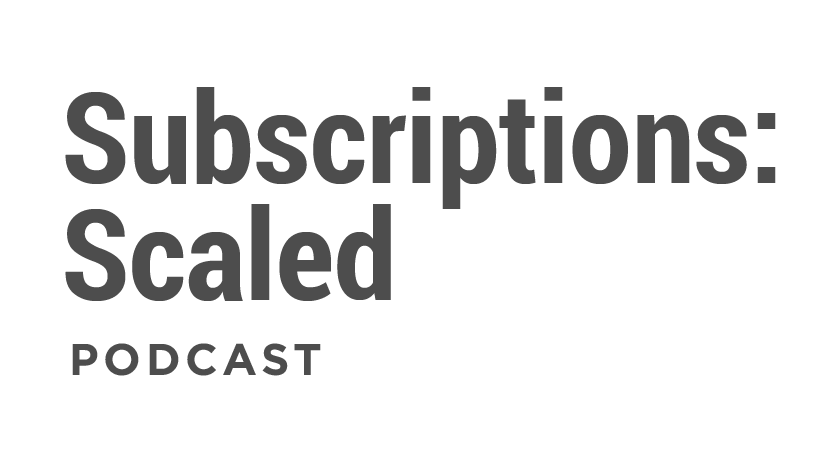Episode 10: Tips on Positioning Your Subscription Offering feat. Sai Gupta, CTO and Co-Founder of Wing
In this episode of the Subscriptions: Scaled podcast, Nick Fredrick, President of Rebar Technology Solutions, is joined by Sai Gupta, CTO and Co-Founder of Wing. Their conversation centers around how to position a subscription offering, covering areas such as pricing, structuring subscription offering tiers, and even pivoting in order to find the best product market fit.
What is Wing?
Wing is a subscription-based VA service that describes itself as the “assistant service of the future.” It uses a hybrid blend of AI technology and human labor to perform various tasks that don’t require highly specialized knowledge. These tasks include data entry, CRM management, invoicing, shopping for supplies, and more.
Wing services various different industries, including real estate, marketing, IT, legal, and more, with customers spanning all over the world. Their goal is to be a one-stop-shop for small and medium-sized businesses looking for help running the non-specialized aspects of the business.
The Story of Wing
The idea for Wing first came to life in a messy college dorm room. Sai and his roommates were scrambling to find a cleaning service the night before one roommate’s parents were due to visit, but to no avail. The group of friends realized how useful it would’ve been to have an on-demand personal assistant to help them with day-to-day tasks, such as cleaning their room. With that, they decided to launch Wing as a B2C personal assistant app targeted towards helping individuals.
COVID-19’s Impact on Wing
Shortly after launching in February 2020, COVID-19 began and took away many of the personal use cases that the app was built to solve, such as flight bookings and restaurant reservations.
Because of this, Wing decided to pivot its business from B2C to B2B and began targeting businesses, startups, and executives and offering them help with receptionist tasks, design services, accounting work, and more. This pivot brought the company from its starting point of making $2,000 MRR to $40,000 MRR in only six months, and the company now sits at a more than $10 million dollar valuation.
Finding Product Market Fit
Although COVID-19 was one of the main factors that contributed to the business pivoting from B2C to B2B, there were also various other reasons why Wing made the decision to pivot.
When talking to their initial B2C customers, Sai recalls hearing multiple comments from different business owners on how they wished that Wing would help their businesses too. After doing market research into the VA space, Sai and his team found that while there were many competitors offering VA services on an hour-by-hour basis, there were no competitors offering an unlimited service with a monthly subscription.
The team also conducted focus group sessions and spoke with their investors, both of which served as further confirmation that pivoting would be best for the business.
Pricing a Subscription Offering
When settling on a price for their two subscription offerings - a $700 basic package and a $1,250 pro package -, Wing made sure to stay below the amount that their subscribers would’ve had to pay by hiring an employee to fulfill the tasks, as well as the amount their competitors were charging, while still maintaining their expected profit margin.
The tasks that Wing covers, such as receptionist duties, data entry, and administrative tasks, are often able to be completed using Wing’s AI. Wing calculated that on average, if a company were to pay someone minimum wage to perform these tasks, it would cost them at least $2,000 a month in salary. In addition, Wing looked at the prices their competitors normally set and found that for simple tasks, such as a one-time flight booking, prices could easily go up to $100.
Activating New Subscribers
Engaging subscribers familiar with a subscription offering is generally easier than trying to engage subscribers who have never used similar products.
For Wing, one obstacle they had to overcome was engaging businesses who had never used VA services before. While these were generally willing to subscribe to Wing after hearing about all the ways it could help them, they would often fail to actually use Wing and in turn, would opt out of renewing the service.
To offset this issue and increase engagement, Wing began pairing new businesses up with their MBA interns for hour-long expert sessions. During the session, the MBA would learn about the business and uncover the gaps in their current processes. They would then return to the business the next day with a clear, recommended process of how they could best use Wing. After implementing this system, Wing noticed that their engagement had increased to 85%, meaning that businesses would use Wing on recurring and new tasks an average of 85 out of 100 days.
In addition, Wing makes it a point to reach out to subscribers who don’t engage on the platform for a set amount of time and encourage them to use Wing to complete their daily to-do list.
To hear more of Sai’s subscription business expertise, tune into this episode of the Subscriptions: Scaled podcast.
—
Ready to get started with Rebar?
Head to rebartechnology.com or email info@rebartechnology.com to schedule a call today.
